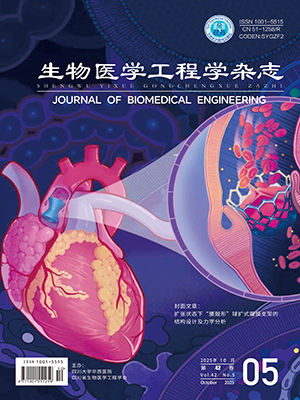| 1. |
Patek M, Stewart M. Spinal cord injury. Anaesth Intensive Care Med, 2020, 21(8): 411-416.
|
| 2. |
Gregory M A, Gregory R J, Podd J V. Understanding Guillain-Barré Syndrome and Central Nervous System involvement. Rehabil Nurs J, 2005, 30(5): 207-212.
|
| 3. |
Peng X-Y, Ma J-Y, Cheng X-D. Clinical study with randomized control on the therapy of integrated Chinese and Western medicine in treating neurological autoimmune diseases: A meta-analysis. World J Tradit Chin Med, 2018, 4(3): 85.
|
| 4. |
Jiang Y. Combination of wearable sensors and internet of things and its application in sports rehabilitation. Comput Commun, 2020, 150: 167-176.
|
| 5. |
Zimmerli L, Jacky M, Lünenburger L, et al. Increasing patient engagement during virtual reality-based motor rehabilitation. Arch Phys Med Rehabil, 2013, 94(9): 1737-1746.
|
| 6. |
Horton S, Howell A, Humby K, et al. Engagement and learning: an exploratory study of situated practice in multi-disciplinary stroke rehabilitation. Disabil Rehabil, 2011, 33(3): 270-279.
|
| 7. |
Bong S Z, Wan K, Murugappan M, et al. Implementation of wavelet packet transform and non linear analysis for emotion classification in stroke patient using brain signals. Biomed Signal Proces, 2017, 36: 102-112.
|
| 8. |
Nehrujee A, Ivanova E, Srinivasan S, et al. Increasing the motivation to train through haptic social interaction – pilot study// 2023 International Conference on Rehabilitation Robotics (ICORR). Singapore: IEEE, 2023: 1-6.
|
| 9. |
Verrienti G, Raccagni C, Lombardozzi G, et al. Motivation as a measurable outcome in stroke rehabilitation: A systematic review of the literature. IJERPH, 2023, 20(5): 4187.
|
| 10. |
Ziejka K, Skrzypek-Czerko M, Karłowicz A. The importance of stroke rehabilitation to improve the functional status of patients with ischemic stroke. J Neural Neurosurg Nurs, 2015, 4(4): 178-183.
|
| 11. |
Otaka Y. Motivation for rehabilitation in patients with subacute stroke: a qualitative study. Front Rehabil Sci, 2021, 2: 664758.
|
| 12. |
Pehlivan A U, Losey D P, O’Malley M K. Minimal assist-as-needed controller for upper limb robotic rehabilitation. IEEE Trans Robot, 2016, 32(1): 113-124.
|
| 13. |
康俊, 施长城, 张勤, 等. 机器人辅助上肢康复训练中训练者主动参与度估计方法研究. 中国康复医学杂志, 2021, 36(8): 978-983, 991.
|
| 14. |
Zhang J, Zeng H, Li X, et al. Bayesian optimization for assist-as-needed controller in robot-assisted upper limb training based on energy information. Robotica, 2023: 1-15.
|
| 15. |
李国宁, 陶亮, 孟京艳, 等. 基于交互力模糊识别的上肢康复机器人模式调整控制策略研究. 生物医学工程学杂志, 2024, 41(1): 90-97.
|
| 16. |
曾洪, 陈晴晴, 李潇, 等. 基于贝叶斯优化的康复训练参与度自适应增强方法研究. 电子与信息学报, 2023, 45(8): 2770-2779.
|
| 17. |
Wang J, Wang W, Ren S, et al. Engagement enhancement based on human-in-the-loop pptimization for neural rehabilitation. Front Neurorobotics, 2020, 14: 596019.
|
| 18. |
Ödemiş E, Baysal C V. Development of a participation assessment system based on multimodal evaluation of user responses for upper limb rehabilitation. Biomed Signal Proces, 2021, 70: 103066.
|
| 19. |
Guo S, Pang M, Gao B, et al. Comparison of sEMG-based feature extraction and motion classification methods for upper-Limb movement. Sensors, 2015, 15(4): 9022-9038.
|
| 20. |
Koppolu P K, Chemmangat K. Automatic selection of IMFs to denoise the sEMG signals using EMD. J Electromyogra Kines, 2023, 73: 102834.
|
| 21. |
Iosa M, Galeoto G, De Bartolo D, et al. Italian version of the pittsburgh rehabilitation participation scale: psychometric analysis of validity and reliability. Brain Sci, 2021, 11(5): 626.
|
| 22. |
Lee D, Fischer H, Zera S, et al. Examining a participation-focused stroke self-management intervention in a day rehabilitation setting: a quasi-experimental pilot study. Top Stroke Rehabil, 2017, 24(8): 601-607.
|
| 23. |
Blanco-Mesa F, Merigó J M, Gil-Lafuente A M. Fuzzy decision making: a bibliometric-based review. IFS, 2017, 32(3): 2033-2050.
|
| 24. |
Suwabe R, Saito T, Hamaguchi T. Verification of criterion-related validity for developing a markerless hand tracking device. Biomimetics, 2024, 9(7): 400.
|
| 25. |
Duthilleul N, Pirondini E, Coscia M, et al. Effect of handedness on muscle synergies during upper limb planar movements// 2015 37th Annual International Conference of the IEEE Engineering in Medicine and Biology Society (EMBC). Milan: IEEE, 2015: 3452-3455.
|
| 26. |
Sainburg R. Evidence for a dynamic-dominance hypothesis of handedness. Exp Brain Res, 2002, 142(2): 241-258.
|
| 27. |
Mathew J, Sarlegna F R, Bernier P-M, et al. Handedness matters for motor control but not for prediction. eNeuro, 2019, 6(3): ENEURO.0136-19.2019.
|
| 28. |
Goble D J, Lewis C A, Brown S H. Upper limb asymmetries in the utilization of proprioceptive feedback. Exp Brain Res, 2006, 168(1-2): 307-311.
|
| 29. |
Pereira R, Freire I V, Cavalcanti C V G, et al. Hand dominance during constant force isometric contractions: evidence of different cortical drive commands. Eur J Appl Physiol, 2012, 112(8): 2999-3006.
|
| 30. |
Pareek S, Manjunath H, Esfahani E T, et al. MyoTrack: realtime estimation of subject participation in robotic rehabilitation using sEMG and IMU. IEEE Access, 2019, 7: 76030-76041.
|
| 31. |
Corvini G, D’Anna C, Conforto S. Estimation of mean and median frequency from synthetic sEMG signals: Effects of different spectral shapes and noise on estimation methods. Biomed Signal Proces, 2022, 73: 103420.
|
| 32. |
盛春华, 王强. 基于时频点密度的肌电信号起止点自适应检测. 电子测量技术, 2024, 47(16): 165-173.
|




